Spotted Fever Rickettsiosis (SFR)
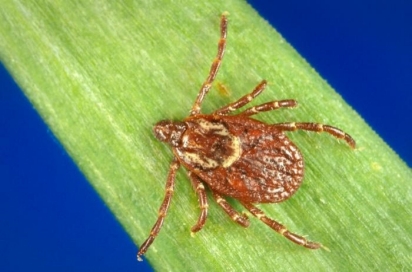
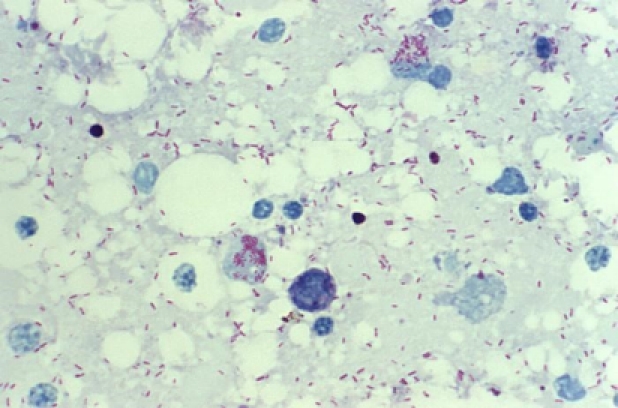
Spotted Fever Rickettsioses (SFR) are a group of tick-borne diseases caused by bacteria from the Rickettsia species, including Rickettsia rickettsii and Rickettsia parkeri. It is difficult to distinguish between illnesses caused by different Rickettsia species with current testing protocols; however, Rocky Mountain Spotted Fever (RMSF), caused by Rickettsia rickettsii, is the most severe. In Tennessee, these bacteria are transmitted by the Dermacentor variabilis, also known as the American dog tick, as well as several other types of ticks.
SFR is a highly reported tick-borne disease in Tennessee, with 75 probable and confirmed cases reported in 2023, which is a decrease from 2022. Prior to 2019, it was typical to see over 600 cases annually; however, COVID-19 and a case definition change in 2020 have likely reduced the number of cases reported since then. Tennessee is one of the five states that make up over 50% of all national SFR cases.
For more information about this disease, see the CDC's Rocky Mountain Spotted Fever (RMSF) Home Page.
The gradient on the map below refers to average SFR incidence rates for each county in Tennesee from 2013-2023, which was calculated using county population data from the 2020 U.S. Census.
From 2013-2023, there were 4,352 probable and confirmed cases of SFR reported. The top ten counties with the highest reported SFR cases in 2022 and 2023 were in the Mid-Cumberland, South Central, Southeast, Upper Cumberland, and Western regions. Sumner, Lawrence, Stewart, and Wayne counties had an increase in cases in 2023, while case numbers in Davidson, Dickson, and Maury counties dropped by 50% or more. Overall, there was a noticeable decrease in SFR cases in 2023 as compared to 2022.
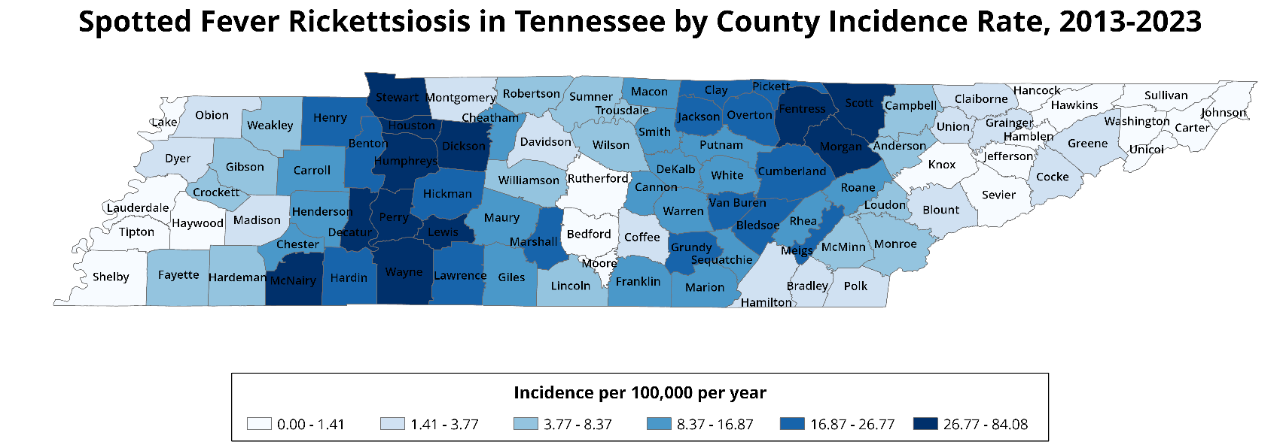
In Tennessee, illness onset for cases of SFR is mainly reported in the warmer months of the year. The number of reported SFR cases is lowest in the winter (December-February), slightly increases in the early spring (March-April), peaks in the late spring to late summer (May-September), and then gradually declines through autumn (October-November).
Peak transmission for SFR in Tennessee is associated with tick season, which occurs annually from early spring to late summer.
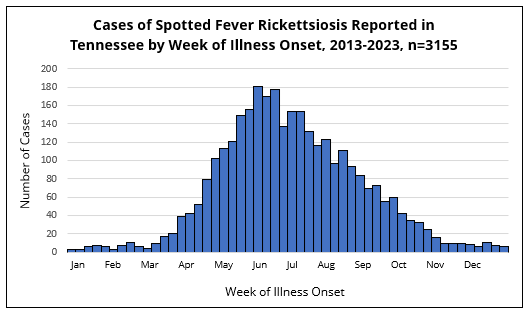
Anyone who spends time outdoors in Tennessee is at risk of contracting SFR, because the ticks that spread this disease are most often found in wooded, brushy areas. People holding outdoors-based occupations, such as farmers and landscapers, may be at increased risk of getting bitten by an infected tick, as are people who regularly hike, camp, hunt, or garden in or around wooded areas.
Ticks may also dwell in the property surrounding Tennessee homes, especially if your yard is either next to a brushy area or has tall grass and/or leaf litter. Even outside of our state's forests, it is important to take the necessary steps to prevent tick bites in any environment habitable by these ticks.
Individuals of any reported gender, sex, and age group in Tennessee can get sick with SFR. However, most cases of SFR are reported in residents 50 years of age or older. Additionally, within every age group, significantly more SFR cases affect male patients than female patients.
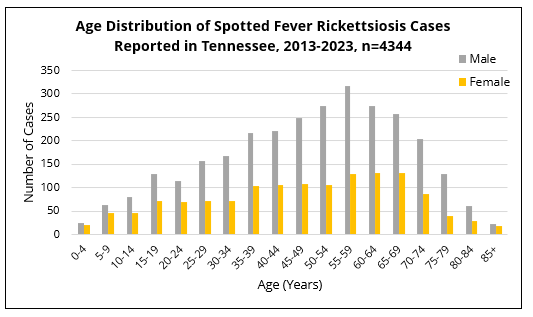
The number of SFR cases reported in Tennessee used to be over 600 annually; however, COVID-19 and a case definition change in 2020 likely reduced this number in 2020-2023. Despite this recent decline, SFR is still a highly reported tick-borne disease in Tennessee.
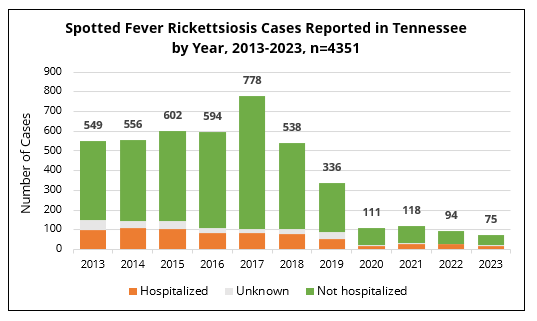
Early signs and symptoms of SFR typically mirror those of other tick-borne diseases, such as fever and headache. However, if left untreated, this disease can rapidly progress to a serious and life-threatening illness. Common signs and symptoms include:
- Fever
- Headache
- Rash (red splotches or pinpoint dots)
- Nausea
- Vomiting
- Stomach pain
- Muscle pain
- Lack of appetite
Some patients who recover from severe SFR may be left with permanent damage as a result of the acute illness. Long-term health problems can include:
- Amputation of arms, legs, fingers or toes from damage to blood vessels in these areas
- Hearing loss
- Paralysis
- Mental disability
For more information, see the CDC's RMSF Signs and Symptoms web page.
SFR is diagnosed by a healthcare provider, who can order blood tests to look for evidence of Rickettsia species bacteria. It may take several weeks for test results to return. If your provider is concerned, they should prescribe you with antibiotics while you wait for the results.
For more information, see the CDC's RMSF Diagnosis and Testing web page.